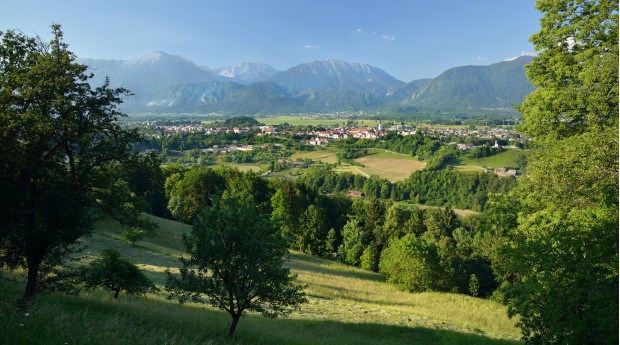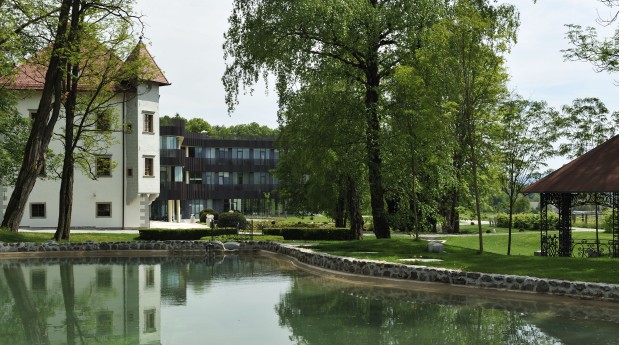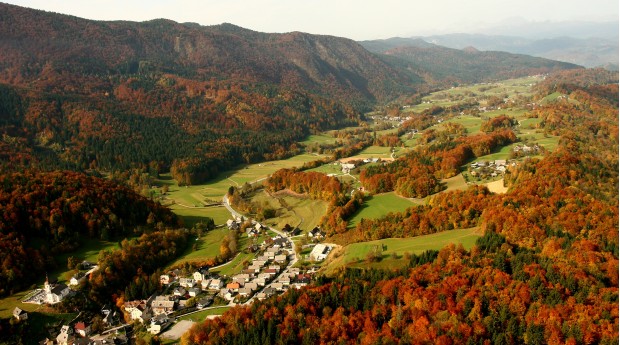While much of Europe is basking, or rather sweltering, in record-high temperatures, this ‘summer’ here in Slovenia has, so far, been marked by some mega storms, the likes of which have never been seen at this time of year, if ever.
The extreme hail and gale-force winds have wreaked havoc throughout the country, and there’s more predicted for later this week too. So, everyone is waiting and praying that there isn’t a repeat of last week, which brought significant damage to cars, roofs, crops, houses and more.

On a more positive note, here in the Gorenjska region, i.e. the mountainous region of Slovenia, temperatures tend not to get as high as at the coast and the southeast part of the country. And even if they do, you are never far from a forest to take shelter in, a mountain to climb for some cooler air, or a pool or lake to jump into to cool off.
Here in Radovljica, we are lucky to have the Karavanke range and the Kamnik-Savinja Alps to the north, the Jelovica plateau to the south, and the Julian Alps on the doorstep, the only problem is, with so much choice, it can be hard to decide where to go!

Last Wednesday, however, the decision was easy, as I had found out that the lady who runs the mountain hut on the Vodiška planina mountain pasture makes gluten-free štruklji, a real rarity indeed, in fact, quite possibly the only mountain hut that offers them.
It’s actually quite difficult to describe what štruklji are, other than to say they are made using a light dough mixture that is rolled out very thinly then filled and rolled, like a Swiss roll, before being steamed or boiled. The fillings can be sweet or savoury, depending on how creative and adventurous you want to be!

Photo: štruklji at Gostisce Draga in the Draga Valley
I can count on one hand how many times I’ve eaten them since being diagnosed with coeliac disease, so to find gluten-free ones, and so close to home – relatively speaking – is a real treat.
Below I’ve described the route I took up to the hut, which begins in Kropa, but there are also numerous other routes up to the Vodiška planina mountain pasture, including from the village of Kamna Gorica.
The most direct, albeit steepest, trail begins at St. Leonard’s church – one of two churches in the village.
The trail leads steeply up through the forest, with not much let up in terms of steepness until about the halfway point, which is the meeting point of paths that the lead up from other parts of Kropa.
It takes about half an hour to reach the halfway point, then within another half an hour or so, you emerge onto the mountain pasture.
The pasture is also a meeting point of numerous trails, so you can easily extend your hike in numerous directions.
But this time, we were there for the food! Those with coeliac disease, or those of you who know someone with it, will know that cross-contamination is a big deal (read: ‘problem’), something that so often places that claim to offer gluten-free food don’t take into account. However, as soon as I contacted the lady who runs the hut, her reply was such that I knew immediately that she knew about coeliac disease, so I had no hesitation in ordering them upon my arrival.
And I certainly wasn’t disappointed! I think my smile says it all!
In addition, because flour isn’t used to thicken any of the soups or stews, we ordered jota – a traditional Slovenian cabbage and bean stew, which you can order with or without Carniolan sausage.
Visit Radol’ca recently published a blog on its own website about what food is available at mountain huts in the surrounding area; in fact, it was whilst translating the blog that I discovered that gluten-free štruklji were available! Click here to read more and Dober tek (Enjoy your meal!) as we say here!
© Adele in Slovenia





















































































































